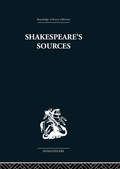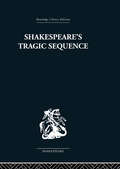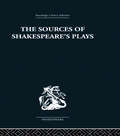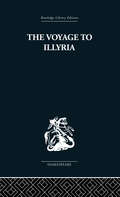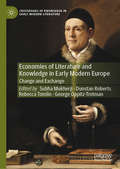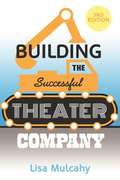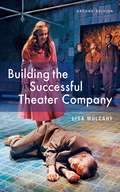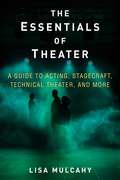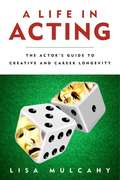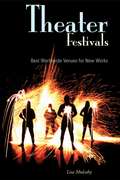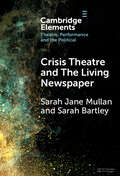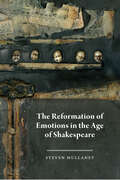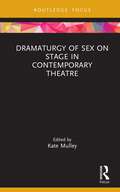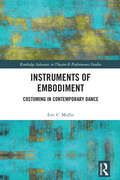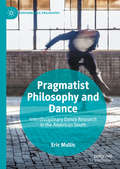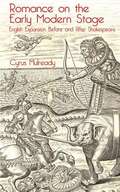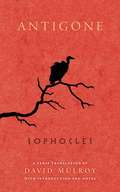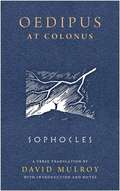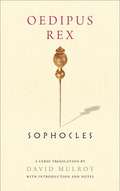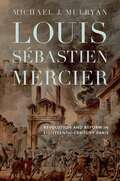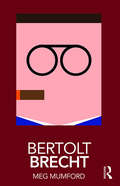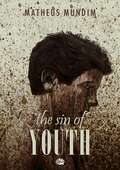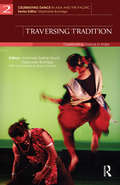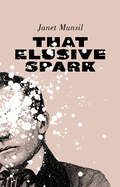- Table View
- List View
Shakespeare's Sources: Comedies and Tragedies
by Kenneth MuirFirst published in 1957. This book finds discovers what the sources to Shakespeare's Comedies and Tragedies really were, considers the dramatic reasons for Shakespeare's departure from them and provides many examples of the way in which he made use of his general reading for particular scenes and speeches. Kenneth Muir shows that Shakespeare frequently uses more than one source and sometimes as many as eight.
Shakespeare's Tragic Sequence
by Kenneth MuirFirst published in 1972. The emphasis of this book is that each of Shakespeare's tragedies demanded its own individual form and that although certain themes run through most of the tragedies, nearly all critics refrain from the attempt to apply external rules to them. The plays are almost always concerned with one person; they end with the death of the hero; the suffering and calamity that befall him are exceptional; and the tragedies include the medieval idea of the reversal of fortune.
The Sources of Shakespeare's Plays
by Kenneth MuirFirst published in 1977. This book ascertains what sources Shakespeare used for the plots of his plays and discusses the use he made of them; and secondly illustrates how his general reading is woven into the texture of his work. Few Elizabethan dramatists took such pains as Shakespeare in the collection of source-material. Frequently the sources were apparently incompatible, but Shakespeare's ability to combine a chronicle play, one or two prose chronicles, two poems and a pastoral romance without any sense of incongruity, was masterly. The plays are examined in approximately chronological order and Shakespeare's developing skill becomes evident.
The Voyage to Illyria: A New Study of Shakespeare (Select Bibliographies Reprint Ser.)
by Kenneth MuirFirst published in 1937. This study argues that the plays of Shakespeare must be studied by comparison with each other and not as separate entities; that they must be related to one another, to the poems and to the Sonnets; that each individual play acquires a deeper significance from its setting in the corpus. Muir and O'Loughlin's critical analysis takes place against the personality of Shakespeare, asserting that that despite all their diversities a single mind and a single hand dominate them and that they are the outcome of one man's critical and emotional reactions to life.
Economies of Literature and Knowledge in Early Modern Europe: Change and Exchange (Crossroads of Knowledge in Early Modern Literature #2)
by Subha Mukherji Dunstan Roberts Rebecca Tomlin George Oppitz-TrotmanPlacing ‘literature’ at the centre of Renaissance economic knowledge, this book offers a distinct intervention in the history of early modern epistemology. It is premised on the belief that early modern practices of change and exchange produced a range of epistemic shifts and crises, which, nonetheless, lacked a systematic vocabulary. These essays collectively tap into the imaginative kernel at the core of economic experience, to grasp and give expression to some of its more elusive experiential dimensions. The essays gathered here probe the early modern interface between imaginative and mercantile knowledge, between technologies of change in the field of commerce and transactions in the sphere of cultural production, and between forms of transaction and representation. In the process, they go beyond the specific interrelation of economic life and literary work to bring back into view the thresholds between economics on the one hand, and religious, legal and natural philosophical epistemologies on the other.
Building the Successful Theater Company
by Lisa MulcahyWhat makes a theater company successful? Lisa Mulcahy poses the question to leaders from nineteen of the country’s most diverse and vital theater companies from the recent past and present, and offers answers in Building the Successful Theater Company. Producers, stage managers, directors-anyone dreaming of running a theater troupe-will benefit from the practical guidance, amusing anecdotes, and sincere advice in this peek behind the curtains of the often difficult, always seductive, profession of theater. With five additional companies profiled in this fully revised third edition, Building a Successful Theater Company features: The LABrynth Theater Company New Paradise Laboratories National Theatre of the Deaf Shotgun Players Asian-American Theatre Company Steppenwolf Theater Company The Pasadena Playhouse La Jolla Playhouse Chicago City Limits Berkeley Repertory Theatre Arena Stage’s The Living Stage Theatre Company Mixed Blood Theatre Company Horizons Theatre Wheelock Family Theatre L.A. Theatre Works A Traveling Jewish Theatre Jean Cocteau Repertory Bailiwick Repertory New Repertory TheatreNew chapters cover funding and financial aspects, maximizing a company's potential through powerful social media use, and creating successful partnerships by teaming up with corporate sponsors and establishing artistic collaborations. Stage veterans reveal advice on everything from locating performance space, to developing a business plan, to and rehearsing and publicizing productions in this invaluable guide to creating or growing a theater company.Allworth Press, an imprint of Skyhorse Publishing, publishes a broad range of books on the visual and performing arts, with emphasis on the business of art. Our titles cover subjects such as graphic design, theater, branding, fine art, photography, interior design, writing, acting, film, how to start careers, business and legal forms, business practices, and more. While we don't aspire to publish a New York Times bestseller or a national bestseller, we are deeply committed to quality books that help creative professionals succeed and thrive. We often publish in areas overlooked by other publishers and welcome the author whose expertise can help our audience of readers.
Building the Successful Theater Company
by Lisa MulcahyThe second edition of Building the Successful Theater Company takes readers even deeper into the world of theatrical production, examining in great depth the financial realities of establishing--and maintaining--a successful organization. This indispensable reference is updated to include more theater company profiles with expert advice to better reveal the pitfalls, passions, and practicalities of the theater industry. The author's been-there-done-that personal experiences along with the wisdom of esteemed theater company heads will encourage readers to aim high and overcome challenges to accomplish all of their creative and financial objectives. Everything from finding a performance space, to creating a first season, to promoting a company and production, to designing a long-term plan is discussed in detail in this engaging guide--a sometimes irreverent, always relevant look behind the curtain of the modern stage troupe. Chapters include developing business and budget plans, rehearsing, attracting attention with publicity and word-of-mouth, adapting to growth, and more. No other book contains the unique insights and sound advice found in this indispensable reference.
The Essentials of Theater: A Guide to Acting, Stagecraft, Technical Theater, and More
by Lisa MulcahyAn Introduction to the World of Theater A friendly and practical guide to the stage, The Essentials of Theater will prepare actors and crew for their next show. Perfect for college students in theater programs, as well as community theater troupes, this book covers all the bases—from a brief history on theater over the centuries and basic terminology to tips on interpreting scripts, developing characters, and utilizing props. Lisa Mulcahy’s helpful explanations and examples take readers on a backstage tour, introducing the tasks and responsibilities of every participant: stage hands, sound designers, prop managers, and more. Special sections include: A simple guide to completing your first production project Worksheets and checklists to practice new skills Interviews with theater critics, playwrights, and sound designers Appendices with suggested readings, viewings, and resources for theater students Through real-world examples and engaging activities, readers will explore every facet of the world of theater: acting, directing, playwriting, production, technical design, and more. Mulcahy even includes a chapter on innovative ways to use one’s theater education off-stage. A great resource for college theater programs and acting classes in general, The Essentials of Theater is an excellent introduction to the stage and all of its moving parts.
A Life in Acting: The Actor's Guide to Creative and Career Longevity
by Lisa MulcahyA Life in Acting is a practical guide for aspiring and established theater actors looking to make a consistent living doing meaningful, creative work on the stage. Author Lisa Mulcahy communicates her advice through a series of interviews and "war stories" that will have you taking notes and laughing until your sides hurt. The sage advice of veteran performers and an entertaining writing style make this a terrific tool to build career longevity. The veteran thespians who give advice are and sustain themselves as artists and professionals through the sage advice of veteran performers who have already done it and continue to do so. Each industry veteran who contributes to these pages is renowned for their talent, is vastly respected by their peers, and has worked consistently in the theater for decades. Actors will learn how some of the industry's most successful and longest-surviving members have developed invaluable traits that have kept them in show business, including: Recognizing personal strengths Developing versatility Marketing oneself effectively Earning a paycheck Pursuing the most valuable opportunities Choosing the right kind of training Finding a mentor Making important connections Dealing with success and failure And much moreA Life in Acting is a must-read for career stage actors. It is a book that will serve as the ultimate guide that can be referenced again and again. Learn how the best actors in the business have made their built a life on the stage, and how you can too!
Theater Festivals: Best Worldwide Venues for New Works
by Lisa MulcahyHere is the bible of theater festivals for any stage professional looking to showcase original work, full of expert tips on selecting festivals that are best suited to an individual's work. This directory of more than 50 festivals in the United States, Canada, and abroad covers every step of festival participation, including contact information, application requirements, auditions and tryout performances, face-to-face meetings and interviews, salary specifics, and performance space details. Serving as a full business primer, it also answers essential questions on negotiating and networking with producers, meeting casting obligations, and what responsibilities one has to a festival when his or her show goes on to become a hit.
Crisis Theatre and The Living Newspaper (Elements in Theatre, Performance and the Political)
by null Sarah Jane Mullan null Sarah BartleyCrisis Theatre and The Living Newspapers traces a history of the living newspaper as a theatre of crisis from Soviet Russia (1910s), through the Federal Theatre Project of the Great Depression in America (1930s), to Augusto Boal's teatro jornal in Brazil (1970s), and its resonance with documentary forms deployed in the final years of apartheid in South Africa (1990s), up until the present day in the UK (2020s). Across this Element, the author is interested in what a transnational and transhistorical examination of the living newspaper through the lens of crisis reveals about the ways in which theatre can intervene in our collective social, economic and political life. By holding these diverse examples together, the author asserts the Living Newspaper as a form of Crisis Theatre.
The Reformation of Emotions in the Age of Shakespeare
by Steven MullaneyThe crises of faith that fractured Reformation Europe also caused crises of individual and collective identity. Structures of feeling as well as structures of belief were transformed; there was a reformation of social emotions as well as a Reformation of faith. As Steven Mullaney shows in The Reformation of Emotions in the Age of Shakespeare, Elizabethan popular drama played a significant role in confronting the uncertainties and unresolved traumas of Elizabethan Protestant England. Shakespeare and his contemporaries--audiences as well as playwrights--reshaped popular drama into a new form of embodied social, critical, and affective thought. Examining a variety of works, from revenge plays to Shakespeare's first history tetralogy and beyond, Mullaney explores how post-Reformation drama not only exposed these faultlines of society on stage but also provoked playgoers in the audience to acknowledge their shared differences. He demonstrates that our most lasting works of culture remain powerful largely because of their deep roots in the emotional landscape of their times.
Dramaturgy of Sex on Stage in Contemporary Theatre (Focus on Dramaturgy)
by Kate MulleyDramaturgy of Sex on Stage in Contemporary Theatre explores the dramaturgy of sex in contemporary works for the stage in the social, cultural and historical context of the time and place during which they were written and performed. Comprising chapters by writers from across North America and Europe, the book covers an expansive range of plays, musicals and dance performances, from Broadway to the Fringe, from post-AIDS epidemic to post-COVID-19 pandemic. Analysing these intimate moments—both textually and as staged—through an intersectional and critical lens illuminates the way power structures are maintained and codified, and how they can be queered and dismantled onstage and off. This examination of depictions of sex on stage attempts to understand from a dramaturgical and sociological perspective how these depictions have developed over time, and how the rise of intimacy directors has responded to the changes within the contemporary theatrical landscape and in the world at large. This is an essential companion for any scholar or practitioner looking to stage, discuss or understand intimacy in performance.
Instruments of Embodiment: Costuming in Contemporary Dance (Routledge Advances in Theatre & Performance Studies)
by Eric MullisInstruments of Embodiment draws on fashion theory and the philosophy of embodiment to investigate costuming in contemporary dance. It weaves together philosophical theory and artistic practice by closely analyzing acclaimed works by contemporary choreographers, considering interviews with costume designers, and engaging in practice-as-research. Topics discussed include the historical evolution of contemporary dance costuming, Merce Cunningham’s innovative collaborations with Robert Rauschenberg, and costumes used in Ohad Naharin’s Virus (2001) and in a ground-breaking Butoh solo by Tatsumi Hijikata. The relationship between dance costuming and high fashion, wearable computing, and the role costume plays in dance reconstruction are also discussed and, along the way, an anarchist materialism is articulated which takes an egalitarian view of artistic collaboration and holds that experimental costume designs facilitate new forms of embodied experience and ways of seeing the body. This study will be of great interest to students and scholars working in performance philosophy, philosophy of embodiment, dance and performance studies, and fashion theory.
Pragmatist Philosophy and Dance: Interdisciplinary Dance Research in the American South (Performance Philosophy)
by Eric MullisThis book investigates how Pragmatist philosophy as a philosophical method contributes to the understanding and practice of interdisciplinary dance research. It uses the author's own practice-based research project, Later Rain, to illustrate this. Later Rain is a post-dramatic dance theater work that engages primarily with issues in the philosophy of religion and socio-political philosophy. It focuses on ecstatic states that arise in Appalachian charismatic Pentecostal church services, states characterized by dancing, paroxysms, shouting, and speaking in tongues (glossolalia). Research for this work is interdisciplinary as it draws on studio practice, ethnographic field work, cultural history, Pentecostal history and theology, folk aesthetics, anthropological understandings of ecstatic religious rituals, and dance history regarding acclaimed works that have sought to present aspects of religious ecstasy on stage; Doris Humphrey's The Shakers (1931), Mark Godden’s Angels in the Architecture (2012), Martha Clarke’s Angel Reapers (2015) and Ralph Lemon’s Geography trilogy (2005). The project thereby demonstrates a process model of dance philosophy, showing how philosophy and dance artistry intertwine in a specific creative process.
Romance on the Early Modern Stage
by Cyrus MulreadyWhat is dramatic romance? Scholars have long turned to Shakespeare's biography to answer this question, marking his 'late plays' as the beginning and end of the dramatic romance. This book identifies an earlier history for this genre, revealing how stage romances imaginatively expanded audience interest in England's emerging global economy.
Antigone
by David MulroySophocles’Antigoneranks with hisOedipus Rexas one of world literature’s most compelling dramas. The action is taut, and the characters embody universal tensions: the conflict of youth with age, male with female, the state with the family. Plot and character come wrapped in exquisite language. Antagonists trade polished speeches, sardonic jibes and epigrammatic truisms and break into song at the height of passion. David Mulroy’s translation ofAntigonefaithfully reproduces the literal meaning of Sophocles’ words while also reflecting his verbal pyrotechnics. Using fluid iambic pentameters for the spoken passages and rhyming stanzas for the songs, it is true to the letter and the spirit of the great Greek original.
Oedipus at Colonus
by David MulroyOedipus at Colonus is the third in Sophocles' trilogy of plays about the famous king of Thebes and his unhappy family. It dramatizes the mysterious death of Oedipus, by which he is transformed into an immortal hero protecting Athens. This was Sophocles' final play, written in his mid-eighties and produced posthumously. Translator David Mulroy's introduction and notes deepen the reader's understanding of Oedipus' character and the real political tumult that was shaking Athens at the time that Sophocles wrote the play. Oedipus at Colonus is at once a complex study of a tragic character, an indictment of Athenian democracy, and a subtle endorsement of hope for personal immortality. As in his previous translations of Oedipus Rex and Antigone, Mulroy combines scrupulous scholarship and textual accuracy with a fresh poetic style. He uses iambic pentameter for spoken passages and short rhymed stanzas for choral songs, resulting in a text that is accessible and fun to read and perform.
Oedipus Rex
by David MulroyOedipus Rexis the greatest of the Greek tragedies, a profound meditation on the human condition. The story of the mythological king, who is doomed to kill his father and marry his mother, has resonated in world culture for almost 2,500 years. But Sophocles' drama as originally performed was much more than a great story--it was a superb poetic script and exciting theatrical experience. The actors spoke in pulsing rhythms with hypnotic forward momentum, making it hard for audiences to look away. Interspersed among the verbal rants and duels were energetic songs performed by the chorus. David Mulroy's brilliant verse translation ofOedipus Rexrecaptures the aesthetic power of Sophocles' masterpiece while also achieving a highly accurate translation in clear, contemporary English. Speeches are rendered with the same kind of regular iambic rhythm that gave the Sophoclean originals their drive. The choral parts are translated as fluid rhymed songs. Mulroy also supplies an introduction, notes, and appendixes to provide helpful context for general readers and students.
Louis Sébastien Mercier: Revolution and Reform in Eighteenth-Century Paris (Transits: Literature, Thought & Culture, 1650-1850)
by Michael J. MulryanFrench playwright, novelist, activist, and journalist Louis Sébastien Mercier (1740–1814) passionately captured scenes of social injustice in pre-Revolutionary Paris in his prolific oeuvre but today remains an understudied writer. In this penetrating study—the first in English devoted to Mercier in decades—Michael Mulryan explores his unpublished writings and urban chronicles, Tableau de Paris (1781–88) and Le Nouveau Paris (1798), in which he identified the city as a microcosm of national societal problems, detailed the conditions of the laboring poor, encouraged educational reform, and confronted universal social ills. Mercier’s rich writings speak powerfully to the sociopolitical problems that continue to afflict us as political leaders manipulate public debate and encourage absolutist thinking, deepening social divides. An outcast for his polemical views during his lifetime, Mercier has been called the founder of modern urban discourse, and his work a precursor to investigative journalism. This sensitive study returns him to his rightful place among Enlightenment thinkers.
Bertolt Brecht (Routledge Performance Practitioners)
by Meg MumfordBertolt Brecht’s methods of collective experimentation, and his unique framing of the theatrical event as a forum for change, placed him among the most important contributors to the theory and practice of theatre. His work continues to have a significant impact on performance practitioners, critics and teachers alike. Now revised and reissued, this book combines: an overview of the key periods in Brecht’s life and work a clear explanation of his key theories, including the renowned ideas of Gestus and Verfremdung an account of his groundbreaking 1954 production of The Caucasian Chalk Circle an in-depth analysis of his practical exercises and rehearsal methods. As a first step towards critical understanding, and as an initial exploration before going on to further, primary research, Routledge Performance Practitioners are an invaluable resource for students and scholars.
The Sin of Youth
by Matheus Mundim Bruna PickerThe Sin of Youth by Matheus Mundim The Sin of Youth is about getting old and the desire to go back in time to change things, relive moments, and flames. The Sin of Youth is a contemporary novel with philosophical existentialist characteristics. The book portrays a moment in the life of young Jamie in which he wakes up in a room in another world. As he leaves the room, he sees a group of people and notes that they are all the folks he once knew and loved in his life, all together and gathered, drinking and partying. Impressed and extremely happy he approaches, confronting Thomas and Luke. They explain that the party was to honor the farewell of his youth. It was the last moment to hang out with everybody and say goodbye. Sad and frustrated, he asks what he can do. They then tell him about the Elder Wizard, who would own the time, and could help him maintain his youth. However, they warn: the way to reach the old man is difficult and tortuous, few have succeeded, and, mainly, time is short. Still, Jamie insists, following a path that makes him come across old memories, old loves, old "I's", wondering what his past "selves" would do if they knew the unfolding of such pure and delicate scenes. If they only knew how some words would mean after a few years. It is a mix of pain, sensitivity, frustration, and happiness to review some moments.
Traversing Tradition: Celebrating Dance in India (Celebrating Dance in Asia and the Pacific)
by Urmimala Sarkar Munsi Stephanie BurridgeDance occupies a prestigious place in Indian performing arts, yet it curiously, to a large extent, has remained outside the arena of academic discourse. This book documents and celebrates the emergence of contemporary dance practice in India. Incorporating a multidisciplinary approach, it includes contributions from scholars, writers and commentators as well as short essays and interviews with Indian artists and performers; the latter add personal perspectives and insights to the broad themes discussed. Young Indian dance artists are courageously charting out new trajectories in dance, diverging from the time-worn paths of tradition. The classical forms of Bharatnatyam, Kathak, Odissi and Manipuri, to name a few, are rich resources for choreographers exploring contemporary dance. This volume speaks about their struggles of working within and outside tradition as they grapple with national and international audience expectations as well as their own values and sense of identity. The artists represented here continue to question the uneasy relationship that exists between the insular world of dance and outside reality. Simultaneously, they are actively creating new dance languages that are both articulate in a performative context and demand examination by researchers and critics.
That Elusive Spark
by Janet MunsilNeuropsychologist Helen Harlow is an expert at understanding the functions of the human brain, and yet her own remains a mystery. Turning her back on a once-brilliant future filled with scientific promise, Helen attempts to escape the mess of her life by diving headfirst into a new one: living in a frat-house basement, teaching Psych 101 to clueless freshmen, and confronting both her depression and the puzzling attentions of her slacker housemate Finlay. Pushed to the brink and increasingly desperate for some semblance of normalcy, Helen finds herself in a doctor's office looking for a change. But not everyone chooses to change. Certainly not Phineas Gage, a construction foreman in 1848 who miraculously survives an explosion that shoots an iron rod though his head. While Phineas makes an extraordinary physical recovery, he has a dramatic change in personality. Attended to and observed by the young doctor James Harlow, Helen's ancestor, the legacy of Phineas's dramatic story shows how far we have come scientifically, and yet how little we can comprehend of the mystery of our own hearts and minds.
Tragic Pathos
by Dana Lacourse MunteanuScholars have often focused on understanding Aristotle's poetic theory, and particularly the concept of catharsis in the Poetics, as a response to Plato's critique of pity in the Republic. However, this book shows that, while Greek thinkers all acknowledge pity and some form of fear as responses to tragedy, each assumes a different purpose for the two emotions and mode of presentation and, to a degree, understanding of them. This book reassesses expressions of the emotions within different tragedies and explores emotional responses to and discussions of the tragedies by contemporary philosophers, providing insights into the ethical and social implications of the emotions.
